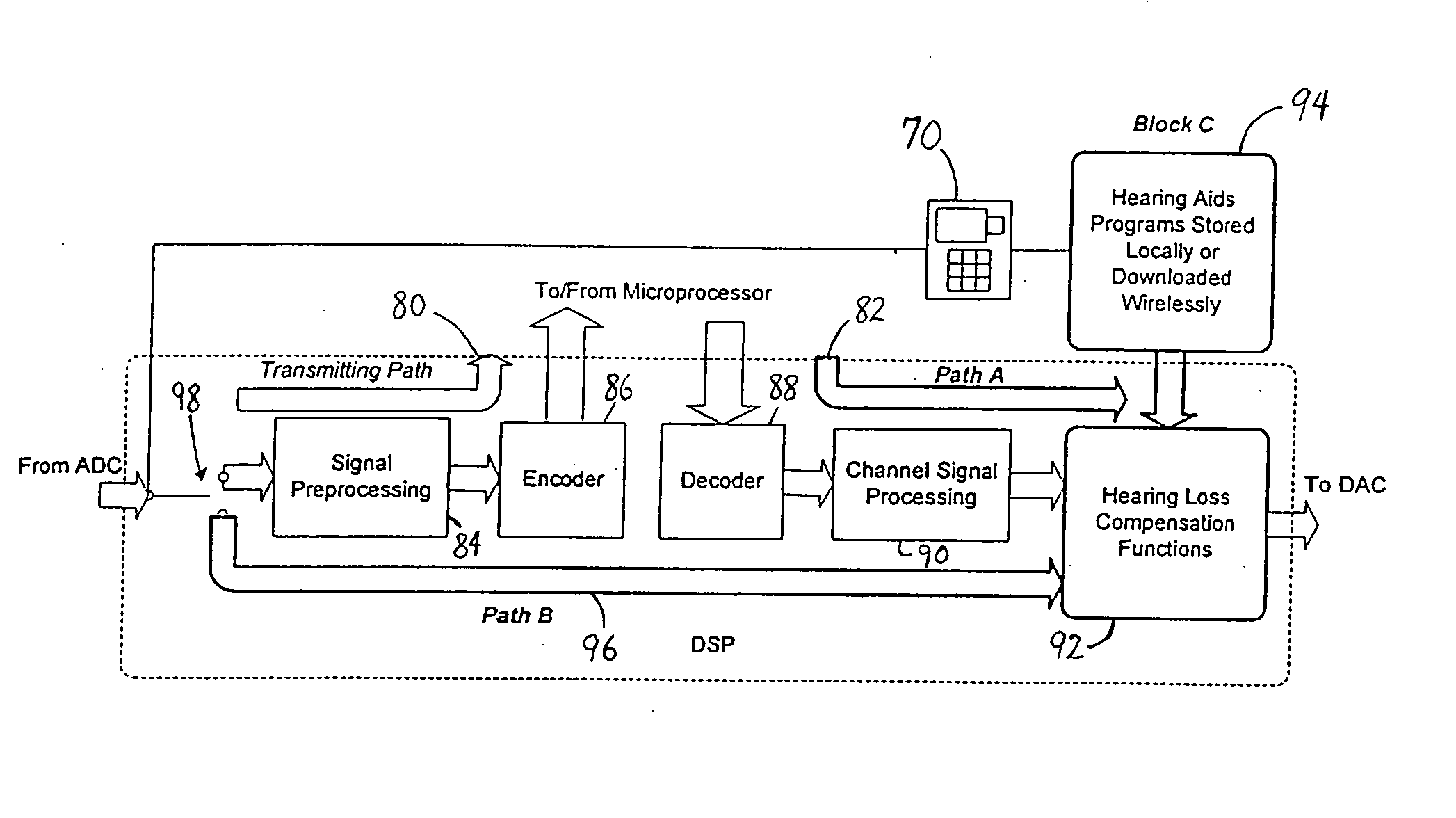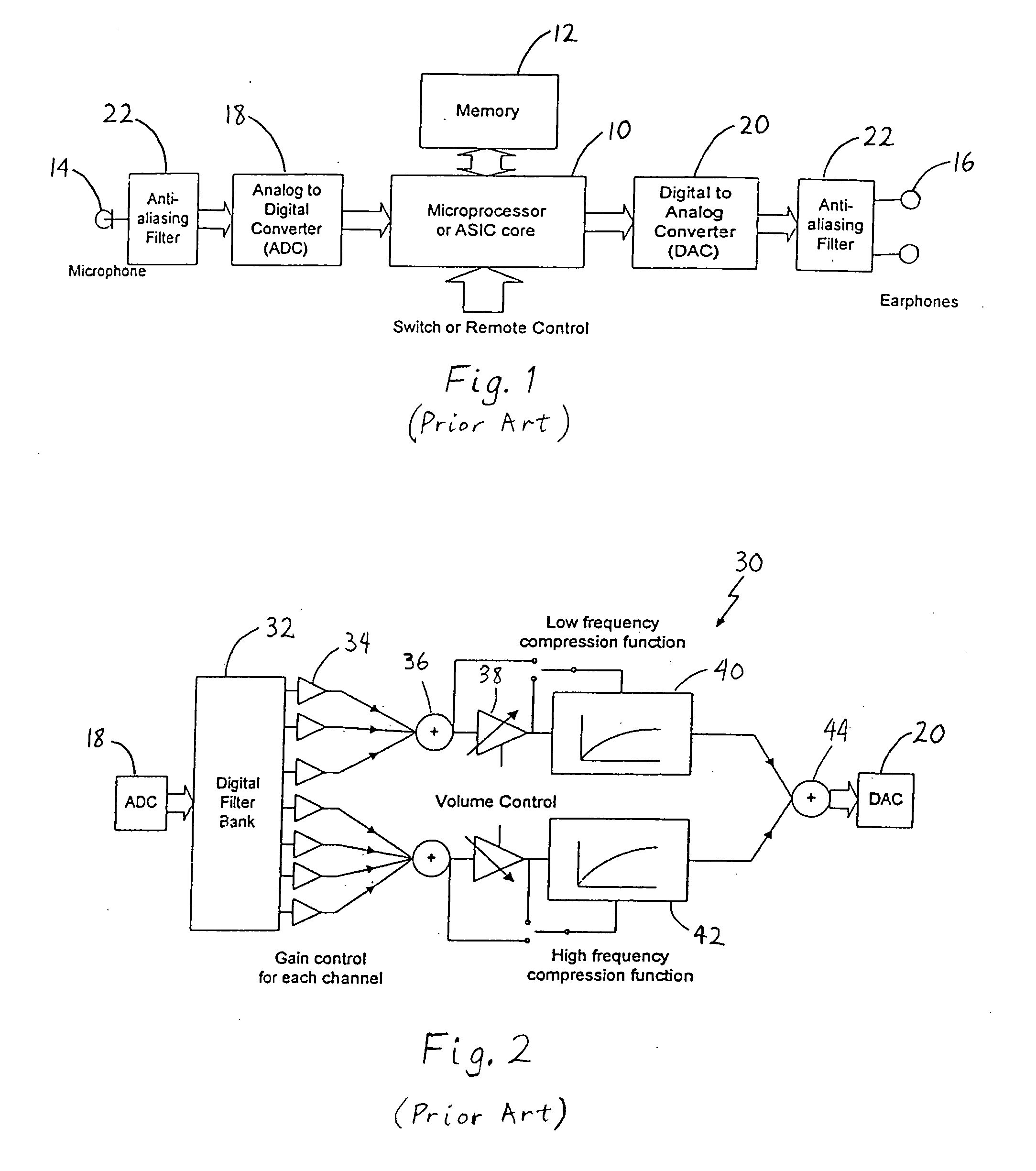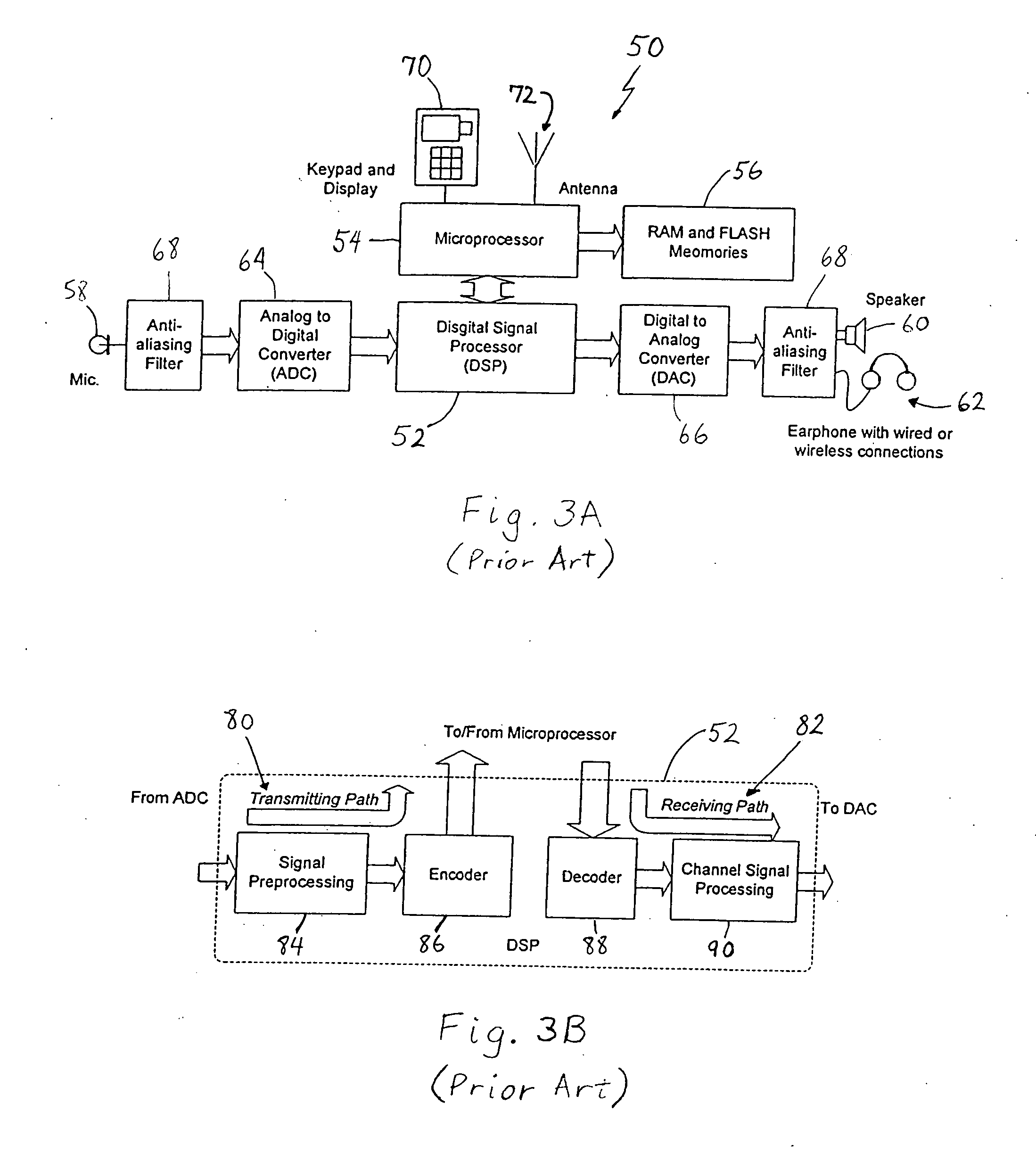Digital cell phone with hearing aid functionality
a cell phone and functionality technology, applied in the field of digital cell phones with hearing aid functionality, can solve the problems of significant physical limitations of existing digital hearing aids, insufficient computing resources of digital hearing aids, and difficulty in achieving multi-program functionality
- Summary
- Abstract
- Description
- Claims
- Application Information
AI Technical Summary
Benefits of technology
Problems solved by technology
Method used
Image
Examples
first embodiment
[0027] In the present invention, as shown in FIG. 4, digital signal processing (DSP) algorithms or functions 92 designed to compensate for the hearing loss of a particular individual are implemented (e.g., via hardware and / or software) in addition to typical signal processing performed by the speech signal processing circuitry 90 of a digital cell phone 50. An example of a hearing loss compensating circuit or algorithm is the multi-channel compression circuit shown in FIG. 2. It is well-known that digital circuits can also be implemented as software or firmware. Therefore, the circuit of FIG. 2 may be represented as an algorithm implemented in software or firmware. For example, if implemented as software or firmware, a hearing loss compensation program can be stored in the memory 56, for example, from where it can be accessed and executed by the microprocessor 54 or DSP 52. As used herein, the term “module” refers to circuitry, software and associated hardware, firmware and associat...
second embodiment
[0032] In the present invention, a loop back signal path 96 (Path B) is added from the microphone 58 of the digital cell phone 50 to the hearing loss compensation circuit 92. This added loop back path 96 enables ambient sound from a person speaking directly to the user to be picked up by the microphone 58 of the digital cell phone 50, converted to digital data by the ADC 64, processed for hearing loss by the hearing loss compensation circuitry 92 within the phone, and then delivered to the speaker 60 or earphones 62 of the user via wired or wireless connection, as described above. With this loop back path 96, the cell phone 50 can function as a stand alone hearing aid at the user's choice while not making a call, although the cell phone 50 could continuously monitor a pilot signal from a base station and notify the user of an incoming call. This additional functionality enables the cell phone 50 to become a wireless communication device and a stand alone hearing aid at the same time...
third embodiment
[0033] In the present invention, the data link capabilities of digital cell phones are used to download additional signal processing programs 94 that are not available on the phone to meet the various needs of a hearing impaired individual at different listening environments. For example, noise has many different forms: road noise, cafeteria noise, babble noise, etc, and each has its own acoustic characteristics. It is often difficult to predict the noise environment and the signal processing needs of a hearing impaired individual.
[0034] In one embodiment, a wireless data service can be used to download the proper signal processing algorithms to compensate for hearing loss, as described in the previous embodiment, either at the choice of the user or as the result of an analysis on the sound signals received by the cell phone when it is in the hearing aid mode. Thus, the manual or automatic selection of hearing-aid processing programs based on the environment of the user provides an ...
PUM
 Login to View More
Login to View More Abstract
Description
Claims
Application Information
 Login to View More
Login to View More - R&D
- Intellectual Property
- Life Sciences
- Materials
- Tech Scout
- Unparalleled Data Quality
- Higher Quality Content
- 60% Fewer Hallucinations
Browse by: Latest US Patents, China's latest patents, Technical Efficacy Thesaurus, Application Domain, Technology Topic, Popular Technical Reports.
© 2025 PatSnap. All rights reserved.Legal|Privacy policy|Modern Slavery Act Transparency Statement|Sitemap|About US| Contact US: help@patsnap.com



